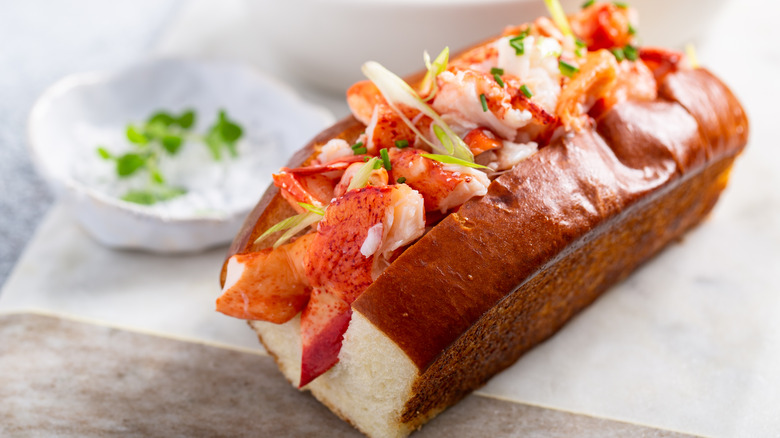Why Ina Garten Doesn't Buy Pre-Cooked Whole Lobster
A melt-in-your-mouth delicacy, there is nothing more visually stunning than a whole lobster that's been boiled to a ruby, red hue. Commonly served with melted butter and a bib, the Barefoot Contessa often uses shellfish to make sandwiches, chowders, and salads. One thing that Ina Garten never does, regardless of the recipe, is buy pre-cooked lobster.
A luxurious ingredient demands proper attention. Though cracking into lobster claws was once taboo, served only to prisoners and slaves as a cheap meal, History explains that it gained popularity in wealthy circles by the 19th century, leading it to become an emblem of class, as we know it today. Despite its status, Healthline notes that it's also a healthy choice since it's a lean protein source that's loaded with copper, selenium, and omega-3 fatty acids, which can protect the body against infection and disease.
If you're looking to make lobster a more prominent part of your diet, then there's one tip that will make a world of difference when buying whole lobster, according to Ina Garten.
Pre-cooked is often overcooked
Buying a pre-cooked whole lobster might be convenient, but it likely won't be as good as when it's done in-house. Demonstrating her recipe for warm lobster rolls, Garten shares in a Food Network video that she prefers to boil her own lobster rather than buy pre-cooked meat as fishmongers tend to overcook it, causing the otherwise sweet and tender crustacean to become tasteless and tough. Given that many lobster recipes require additional cooking, this can further impact the meat.
Instead, poaching lobster at home is the way to go. Garten's foolproof way to cook a whole lobster entails bringing a large stockpot of water and salt to boil before submerging lobsters and cooking for 10 minutes until a thermometer inserted into the tail reaches 140 degrees Fahrenheit (via Food Network).
Despite the risk of buying overcooked lobster from your fishmonger, undercooking at home is also possible. Livestrong stresses keeping an eye out for whether the shell still contains black pigments or if the meat is too soft and translucent, which can signal that the meat might not be fully cooked.

